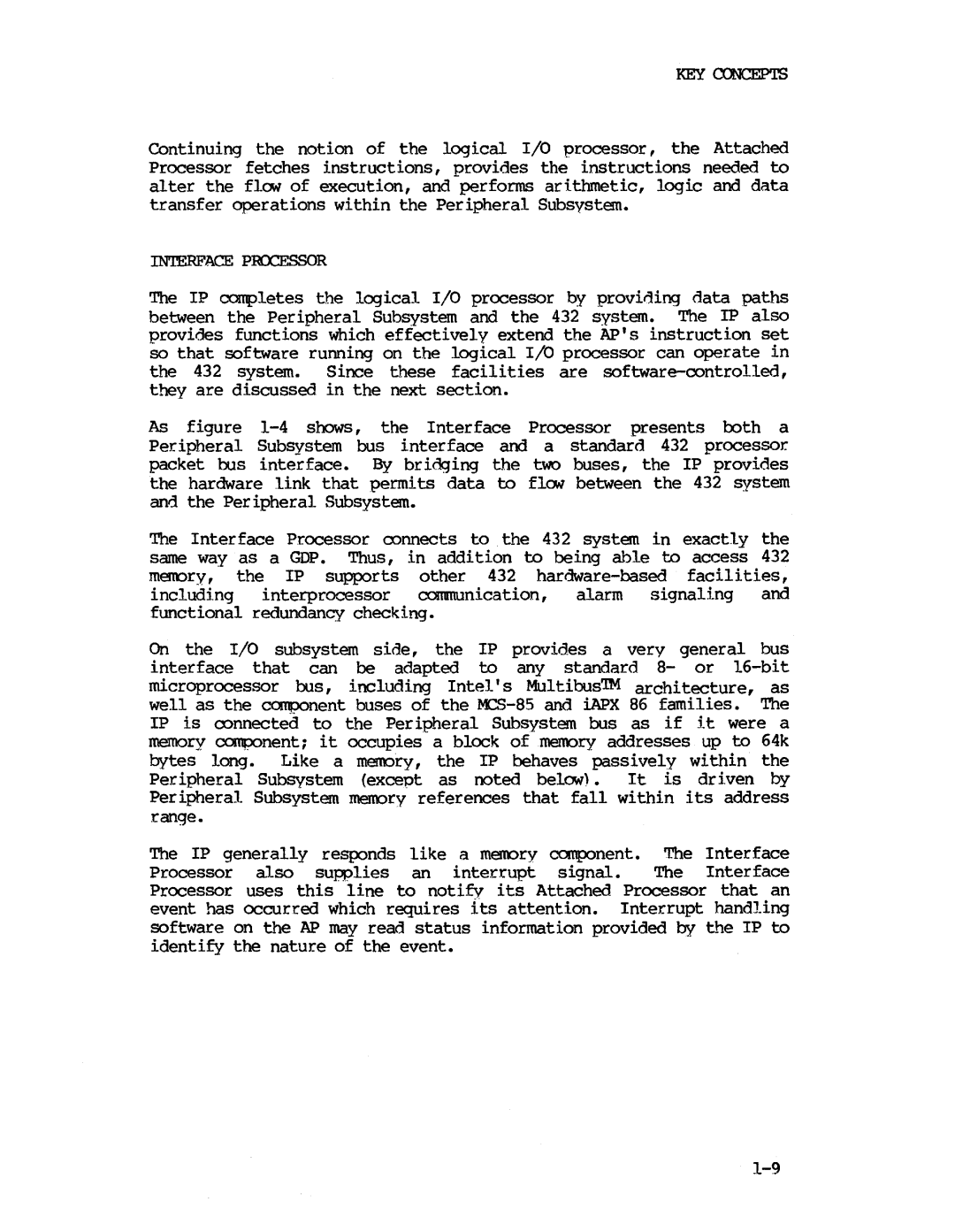
KEY COOCEPTS
Continuing the notion of the logical I/O processor, the Attached Processor fetches instructions, provides the instructions needed to alter the flow of execution, and performs arithmetic, logic and data transfer operations within the Peripheral Subsystem.
INTERFACE P~SSOR
The IP completes the logical I/O processor by providing data paths between the Peripheral Subsystem and the 432 system. The IP also provides functions which effectively extend the AP's instruction set so that software running on the logical I/O processor can operate in the 432 system. Since these facilities are
As figure
The Interface Processor connects to the 432 system in exactly the same way as a GDP. Thus, in addition to being able to access 432 memory, the IP supports other 432
including interprocessor comnunication, alarm signaling and functional redundancy checking.
On the I/O subsystem side, the IP provides a very general bus interface that can be adapted to any standard 8- or
Peripheral Subsystem (except as noted below). It is driven by Peripheral Subsystem memory references that fall within its address range.
The IP generally responds like a memory canponent. The Interface
Processor also supplies an interrupt signal. The Interface Processor uses this line to notify its Attached Processor that an event has occurred which requires fts attention. Interrupt handling software on the AP may read status information provided by the IP to identify the nature of the event.
